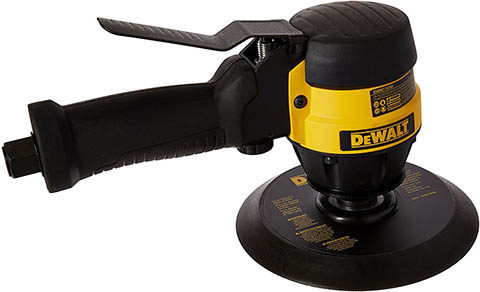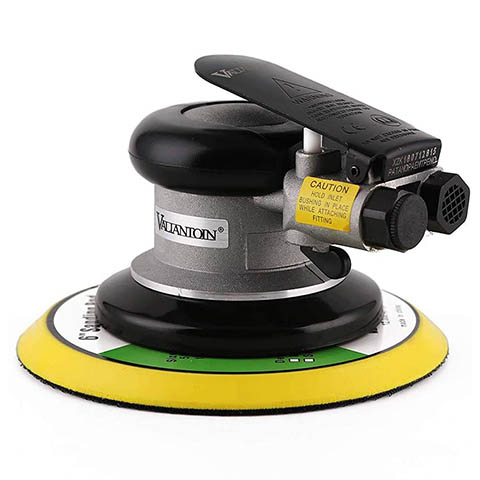Dual Action vs. Random Orbital Sander: Pros, Cons, & Differences
-
Pete Ortiz
- Last updated:
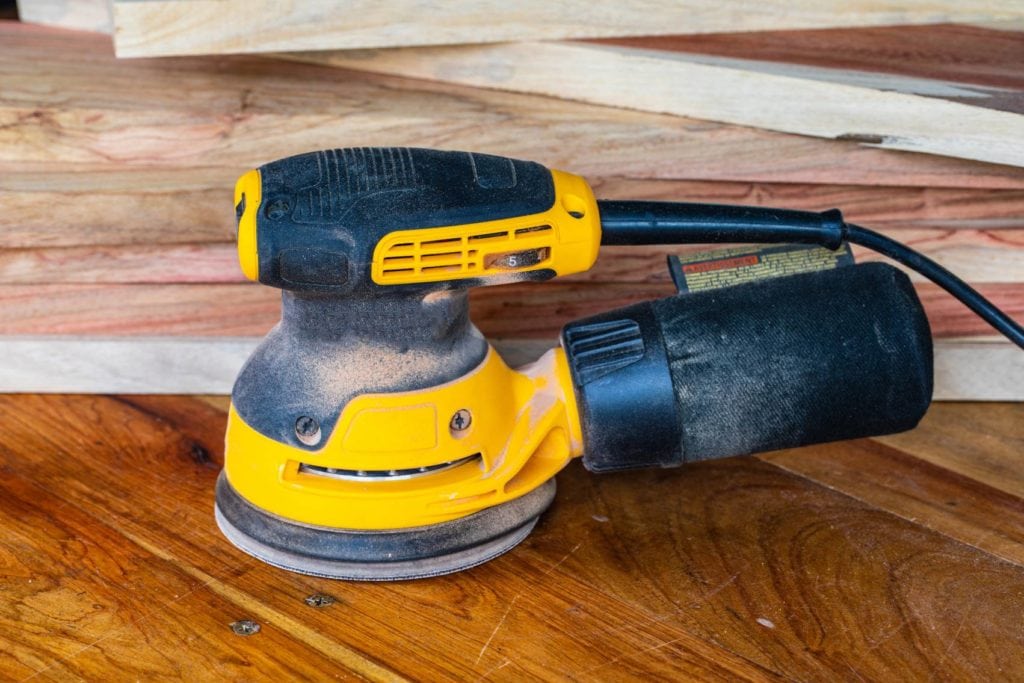
Whether DIYing or working on a professional piece, you cannot finish a project without a sander. Sanders are power tools that smooth rough wooden, metallic, or epoxy surfaces with sandpaper or abrasion pads. The first sander was invented by Art Emmons at Porter-Cable in 1926 in New York. Surprisingly, the sander was almost similar to the modern belt sander.
However, nine decades is a lot of time to assume nothing has changed. Sanders have slowly transformed into different types and designs. Today, the world’s top two designs are dual-action and random orbital sanders. Below, we’ll compare them so that you can determine which is suitable for your needs.
 A Brief Overview of the Dual Action Sander
A Brief Overview of the Dual Action Sander
A dual-action sander is a versatile handheld surface smoother whose design and operation mechanisms look like they have been grafted from disk and belt sanders. To understand how the dual action (DA) works, we’ll explain how a belt and disk sander works.
As the name hints, a belt sander/sander strip has a high-speed motor and drum that rotates a sanding paper to scrape off materials on a flat surface. A belt sander can be mounted on a bench or is portable. A stationary sander is usually large and may be fitted with a disk sander, but despite its cumbersomeness, it is one of the best sanders. The sander’s powerful linear motion quickly eats away soft materials, which is superb for large projects.
On the other hand, a disk sander rotates a circular abrasive pad at high speed. The sander is highly maneuverable and works efficiently on uneven surfaces, joints, and edges. Sometimes, it can eccentrically wobble on the axis for smoother finishes. This depends on the manufacturer, who determines if the wobble will be regular or irregular.
Combining the best features of the two, a DA is a reimagined sander whose abrasive pads move in a linear, back-and-forth motion as a belt sander and can wobble like a disk sander.
Most DAs have two operation modes. The first one locks the sander into a high-speed spinning motion, while the second option allows it to use bearing and wobble as it works.
In spinning mode, the sander quickly eats away a rough surface like a belt sander. The sander achieves a finer, smoother surface when you turn on the wobbling function.
- Easy to control both horizontally and vertically on a flat plane
- Effective on fragile materials with lighter imperfections
- Adjustable handles
- Multiple speed control features
- Generally slow
- Not the best option for deep sanding
A Brief Overview of the Random Orbital Sander

Whether you want to modify a new patio chair or remove old paint from your kitchen shelves, a random orbital sander is just an arm’s reach away. It is easy to handle and achieves unlimited finishes on many surfaces.
Also known as a palm sander, a random orbital sander produces smoother and finer surfaces by rotating in constant irregular overlapping motions. Rupes Tools commercialized the technology in the 1960s.
An orbital sander differs from a random orbital in the uniformity of the rotations and results. The sander rotates in uniform circular motions and constantly leaves behind uneven swirl marks. Because of the irregular overlaps, a grit’s grain in a random orbital sander will not grind the same area more than once. This prevents swirl marks from forming.
There are three major types of random orbital sanders: electric, floor, and air sanders. An electric orbital sander draws power from batteries or standard power sockets. An air sander, in contrast, is a pneumatic tool that uses compressed air to run.
Lastly, a floor random orbital sander is a large version of the standard handheld sander with a wide circular pad to treat floors and remove scuff marks or old paint. Though it can work on any floor, whether cleaning or polishing, it is very effective on wooden floors.
- Good on hard and rough objects
- Very fast
- Multitasker
- Easy to change disks and hooks
- Aggressive power can damage surfaces
- Circular movement limits reach in tight corners
- Usually noisy
What Is the Difference Between a Dual Action Sander and a Random Orbital Sander?
The main difference is that a DA sander achieves linear and circular motions more uniformly, while a random orbital uses circular motions to clear the surface.
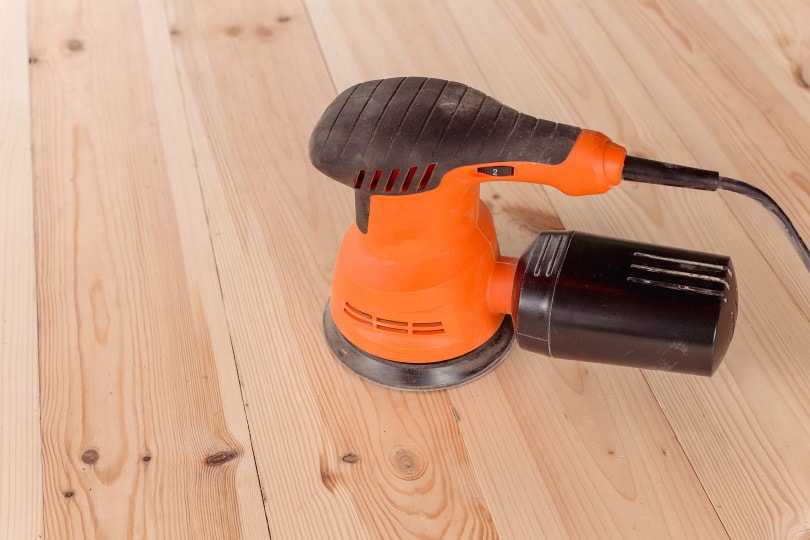
Speed
DA sander
A DA sander spins around its spindle, similar to the earth’s rotation. The spinning produces a jiggling motion, reducing damage and preventing heat from building due to friction.
With its speed constantly interrupted by the jiggling, a DA sander rotates between 1,500 to 7,000 RPM. Ideally, a 6-inch DA can clear a square foot of fairly rough surface within 30 seconds. This is much slower than a random orbital.
Random orbital sander
A random orbital sander is a high-speed machine that can easily cross the 7,000 RPM mark. The sander achieves this by using rotation from the motor to increase momentum, which increases speed.
Ergonomics
DA sander
Since they have a slimmer profile, DA sanders are designed with small palm grips and handles. They are just the right size and good options if you are looking for better control.
Random orbital sanders
Their handles are slightly large but are easy to grip, and you can work with one the whole day.
Uses
DA and random orbital sanders can aggressively sand away material or softly polish it. What separates them is the rotation path, which leads to different results.
- Sanding wood surface if you want a smooth surface ready for painting, varnishing, or staining
- Clearing scarf marks from wood, glass, metals, and epoxy surfaces
- Removing paint on automobiles or wooden surfaces without destroying the main material
- Polishing materials after painting or vanishing
- Shaping putty repair surfaces
- Smoothing edges and joints
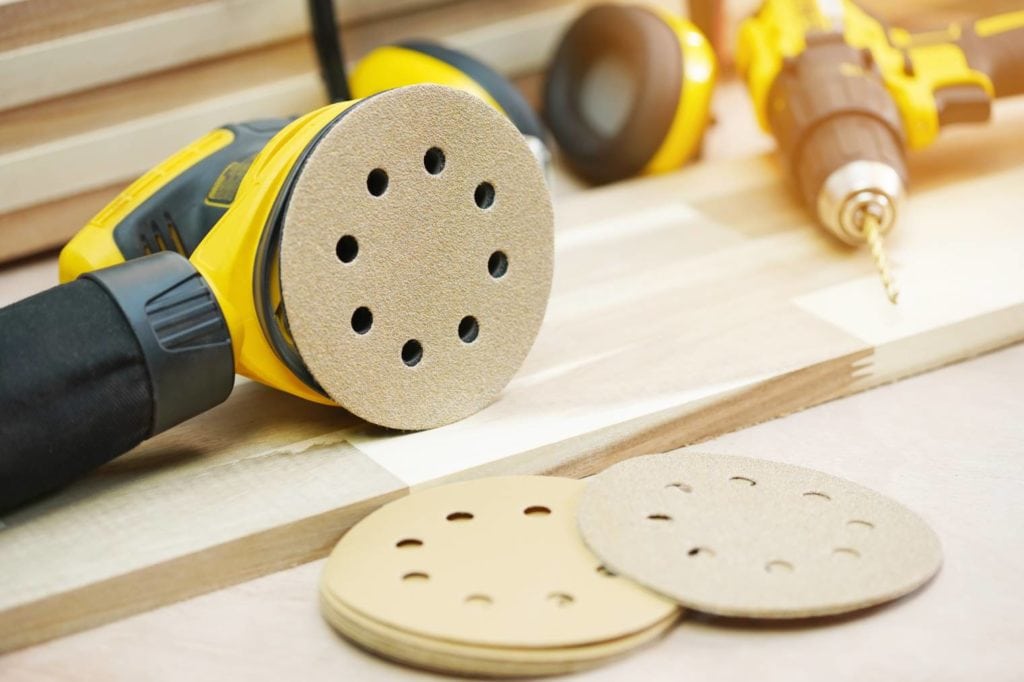
- Good for carpentry and auto work
- The sander is swirl-free. Thus, a surface can be painted directly.
- Smoothing bumpy surfaces. This sander reliably flattens out bumpy surfaces when equipped with coarse grit.
- Works well on joints. An orbital sander is versatile, which allows it to smoothen joints. The disk will also reach places that are impossible to work on using a belt sander.
- Removing rust and paint
- Refinishing surfaces. With appropriate grit, an orbital sander can repair scratched surfaces.
Cost Factor
When discussing the cost of a sander, it differs from brand to brand and is directly proportional to the features and size of a machine.
The Cost of Dual Action Sanders
The dual action is an affordable sander whose price varies greatly. To narrow it down, DA sanders that run on battery kits are more expensive than plug-in sanders. A pneumatic orbital sander has a mid-range price. Generally, there are no major price differences between same-sized DA sanders that run under compressed air or electricity.
However, the product’s size and additional features, such as filter bags and vacuum hoses, increase the price.
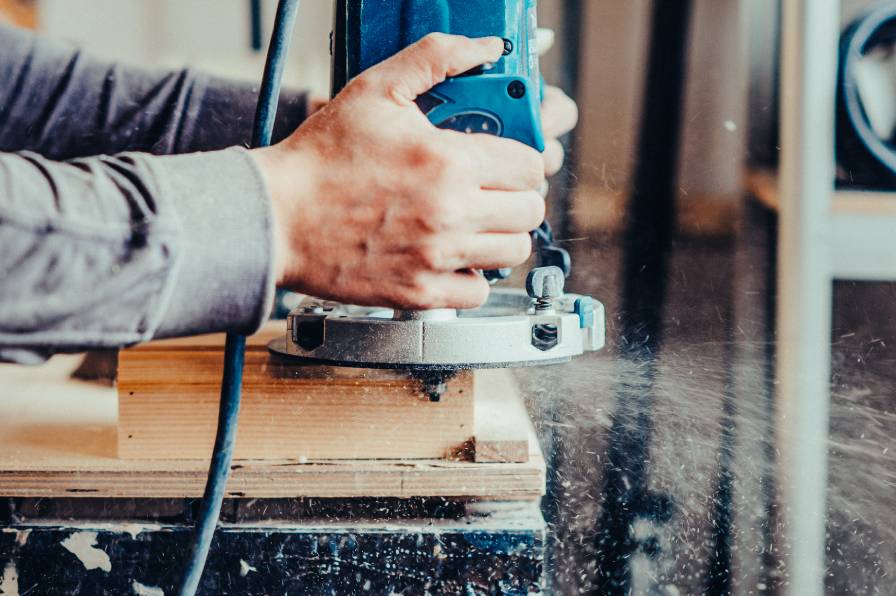
The Cost of an Orbital Sander
Similar to DA, an orbital sander is very affordable, but you pay more for a bigger machine than a small sander. Also, a cordless sander is more expensive because the package includes batteries and a charger, which are priced separately.
Dual Action or Orbital Sander? Which Should I Choose?
Unbiasedly pinpointing a suitable sander between the two is almost impossible because they have interesting features and can remove layers of various materials.
Dual action boasts linear and circular movements, adaptability, portability, and ease of handling. Its uses include sanding, polishing, and smoothing surfaces, attracting DIYers and professionals.
An orbital sander, on the other hand, prevents the surface from forming swirl marks in irregular circular motions. It is also wise to say that the sander is adaptable and comfortable to work with. You can use it on rusty surfaces and in the initial stages of smoothing wood.
 Conclusion
Conclusion
To draw the final line, a dual-action sander is better for most homeowners and casual DIYers. It wins in terms of versatility, ease of handling, and scratch-free final work. However, if you need to improve a large surface, such as an uneven floor, the orbital sander is the tool to use. With a powerful motor that can produce 7,000 RPM, the orbital sander can finish large projects faster than a DA sander.
- https://www.woodshopnews.com/tools-machines/hand-held-sanders-get-better-with-age#:~:text=The%20first%20one%2C%20which%20looked,Cable%20factory%20in%20Syracuse%2C%20N.Y.
- https://www.ehow.com/about_6673244_dual-action-dual-action-sander_.html#:~:text=Dual%2Daction%20sanders%20are%20a,a%20substitute%20for%20either%20one.
- https://en.wikipedia.org/wiki/Random_orbital_sander
- https://www.aboutmechanics.com/what-is-an-air-sander.htm
- https://westlakehardware.com/resources/tips-tricks/what-is-the-difference-between-an-orbital-sander-and-a-random-orbital-sander/
Featured Image Credit: Nakornthai, Shutterstock
Contents

 A Brief Overview of the Dual Action Sander
A Brief Overview of the Dual Action Sander